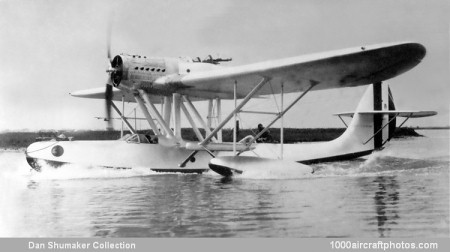In its original production form, the Gabbiano carried a defensive armament of three 0.303 in (7.7 mm) Breda-SAFAT machine guns, one mounted in an open bow turret and the others mounted in semi-enclosed positions in the engine nacelle and rear fuselage. Later, the bow cockpit for the observer was enclosed and the nose gun removed. Bomb racks were attached to the bracing struts between the hull and the wings, these carrying two 551 lb (250 kg) or four 353 lb (160 kg) or 220 lb (100 kg) bombs.
Construction was entirely of wood, the wings and control surfaces being fabric covered, and the power plant was a 900 hp Isotta Fraschini Asso XI R2 C15 twelve-cylinder liquid-cooled V-engine. The Gabbiano first entered service with the Squadriglie da Ricognizione Marittima (Maritime Reconnaissance Squadron) of the Regia Aeronautica Royal Air Force) in 1936, and when Italy entered WW II in June 1940, a total of 202 flying boats of this type was in service.
After the Armistice in 1943, the (southern) royalist air force, known as the Aviazione Cobelligerante Italiana, continued to operate nineteen Gabbiano flying boats, and others continued in service with the (northern) republican air force, then known as the Aeronautica Nazionale Repubblicana.
